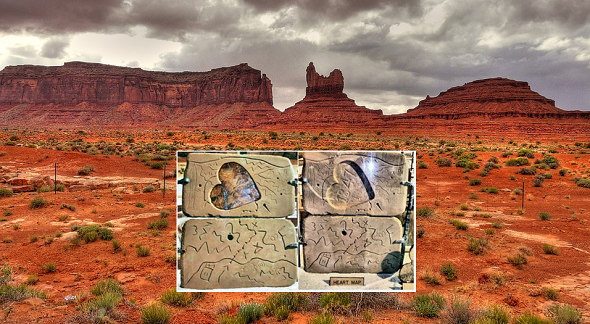The cryptogram
Some people interprete the lines and the symbols on the Peralta Stones as a map. Allegedly this map indicates the location of the so-called Lost Dutchman’s Gold Mine. The numbers on the stones are believed by some to be a formula for the map scale.
Some other hypotheses say that the stones don’t lead to a gold mine but to a treasure or a buried vault containing valuable art objects.
Others think the symbols encode a message. Some even claim to have deciphered the message. For instance, the following cleartext was proposed: “Be ready boy, are on a map on Arizona county scale, scale map.” Many other theories exist, but neither a gold mine nor a treasure has never been found.
As I am still new to this topic, I can’t go into detail about all the stories that have been published about the Peralta Stones. If you consult Google, you will find numerous websites about the stones and the theories surrounding them.
There seems to be serious doubt that the Peralta Stones are genuine and that the gold mine (or the treasure or the art vault) really exists. As a skeptic I am generally doubtful about stories like these. For a critical treatise of the Peralta Stones check here. If you have a different opinion or if you have an idea how to decipher the engravings, please let me know.
Follow @KlausSchmeh
Further reading: Does the Voynich manuscript show the solar eclipse of April 15, 1409?
Linkedin: https://www.linkedin.com/groups/13501820
Facebook: https://www.facebook.com/groups/763282653806483/



Kommentare (5)